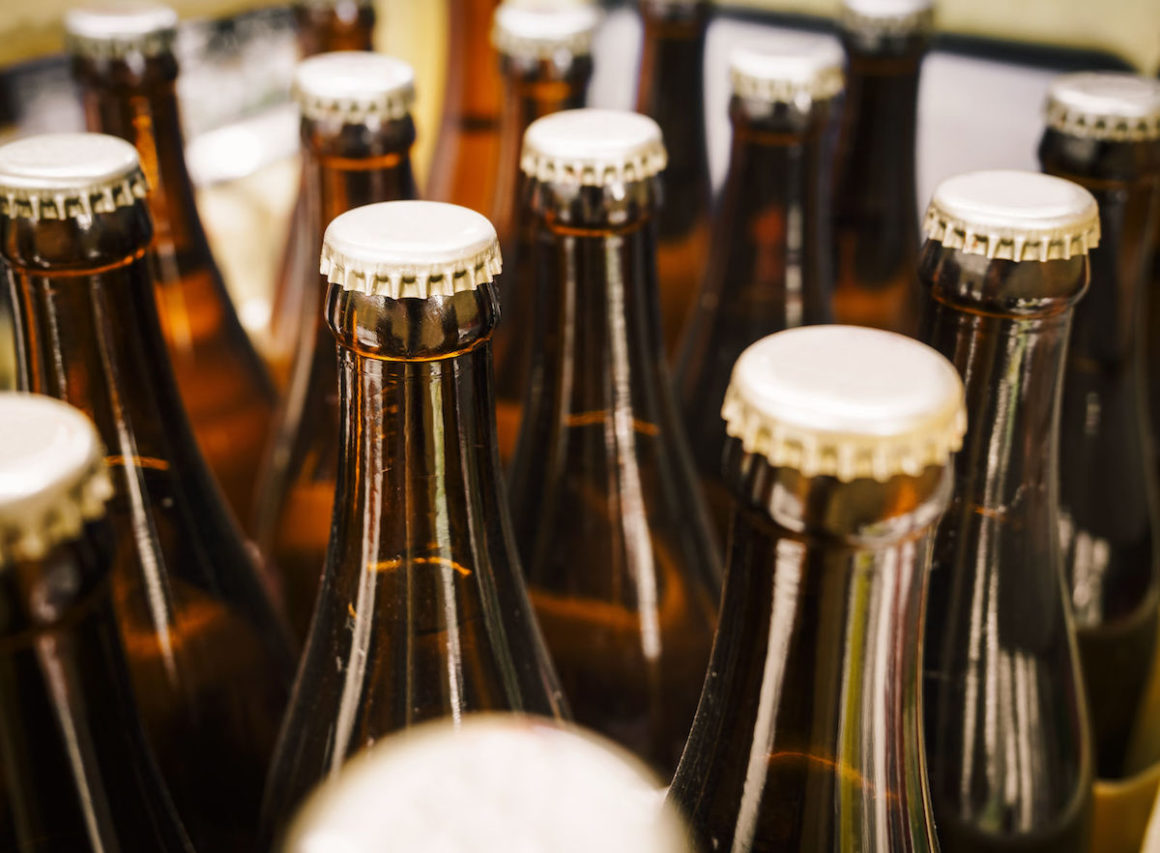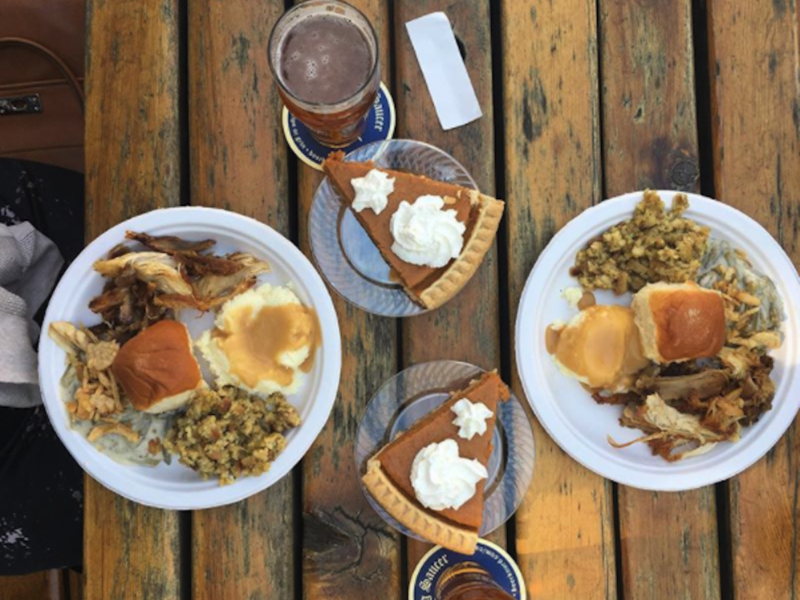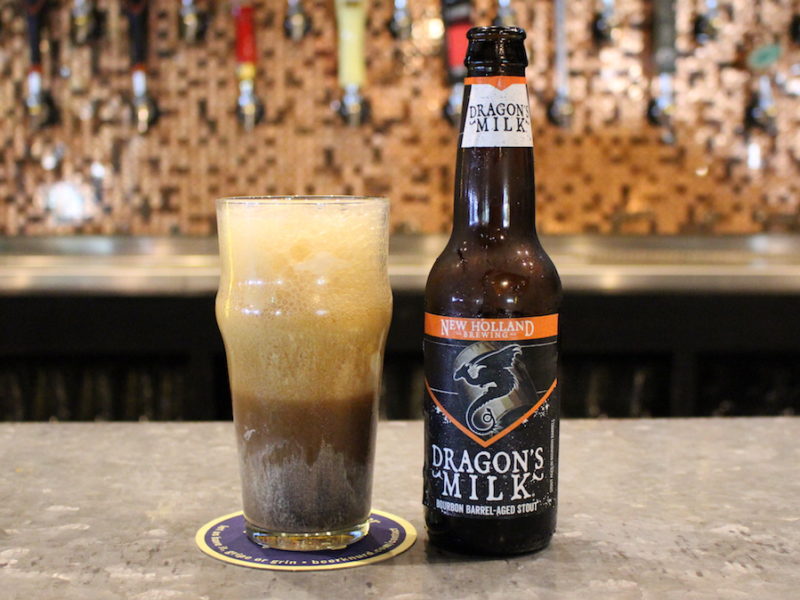Aging beers is always a gamble. Each beer is different, even within the same style, and as such will develop differently over time. There are many factors that play in the flavor development of each bottle — original structure, where, when, how long, etc. On top of that, is the beer even meant to be aged? When it comes to beer, freshness is generally the name of the game. Craft brewers kill themselves by going the extra mile to create a beer that uses the freshest ingredients, is bottled at the proper time and is put in the hands of consumers to enjoy at the peak of flavor quality. So, why the hell would you take that gamble, possibly disrespect the brewer and delay your own gratification by putting that beer away for months or a year or years?
Well, because somewhere along your journey towards beer enlightenment you have had the pleasure of tasting a beer that has had the chance to sit around, evolve in positive ways and maybe even improve. This may have happened by sheer dumb luck or thanks to proper knowledge and skill. That’s because aging a beer can — when successful — create a new, interesting experience and maybe even improve the beer.there are some general guidelines for aging that are 99% of the time tried and true.
So, how does one go about aging a beer? What beers can you age? As we said, it can very much be a “beer-by-beer” proposition, but there are some general guidelines for aging that should lead you to success. One pro-tip to help you really understand the nature of what happens to beer as it ages is to have two to three bottles for testing. This allows you to drink one now (hell yeah!) and test the effects of time on the remaining bottles.
Before we start, you should know you are battling beer’s three enemies: air, light and heat. All of these have adverse effects on your beer regardless of whether you’re planning on drinking it the day you buy it or a few years down the road. There’s a lot to learn and a lot to consider so, let’s jump in.
How To Age Beer (Properly)
1.) Stand Up!
Always store your bottles upright, whether they are capped or corked. Some may tell you otherwise with corked bottles, but due to the potential of unwanted cork flavors and higher chances of exposure to oxygen — a terrible thing — don’t. Storing your beer standing up helps keep any yeast or residual particles from the brewing process at the bottom of the bottle and not clinging to the upper sides of or distributed throughout the bottle.
Some argue that corked beers should be stored sideways to remain in contact with the cork to keep it from drying out and letting in air. However, the internal environment of the bottled beer is going to be quite humid and will most likely keep the cork moist. Plus, most of today’s corked bottles are at least double sealed with wax or foil and a wire cage holding another plastic stopper at the tip of the cork. Depending on quality, corks can last anywhere from several months to decades. You should contact the brewer for any specific bottling questions. Just be sure to leave your bottle standing up while the phone rings.
2.) Embrace The Darkness
You will want to store your bottles somewhere dark and away from light. Light will degrade hops and break down proteins quicker than you can say “skunk”. While this is not always considered an off-flavor (think Corona), it will most definitely make your big stouts and Belgians taste a little wonky.
This is extra important with big beers that do have a pronounced hop profile but are still recommended to age (think barleywines). Even though the hop flavor will and should change over time, you still want to preserve the bottle as well as possible so that it will mature properly. This rule is doubly important for beer in clear or green glass bottles — beer is usually packaged in brown bottles to keep away as much light as possible. Beer in clear bottles can start to degrade within one minute of being exposed to just normal light and five minutes in green bottles. In fact, you should avoid buying beer in anything but brown bottles, cans or kegs. Beer being adversely effected by light is called “lightstruck” and it’s what gives us skunky beer. Store your bottles somewhere light can’t get to them — a refrigerator set between 50-60 degrees Fahrenheit is generally the best route.
Just try and keep it away from walls that have temperature fluctuations. Which takes us to our next point…
3.) Keep It Chill
Temperature is so important when storing your beer bottles. The colder your aging space is, the slower the aging process is. Warmer temperatures will degrade your beers quickly. And fluctuations in temperature will degrade your beer just a quick as if you left it in front of a sunny window for a few days.
The optimal temperature for aging beer depends on the style:
- Barleywines, Tripels, Quads, Imperial Stouts (High ABVs) – 55-60 degrees Farenheit
- Stouts, alts, herbed/spiced, lambics, sours – 50-55 degreess Farenheit
- Lighter beers – 45-50 degrees Farenheit
Slight variances aren’t going to hurt the flavors too much, but do try and put your aging bottle in a safe space and leave it.
4.) Forget About It!
As hard as it is to do, you just gotta forget about that bottle for a while! Leave it to meld for at least six months to a year – it’s a good marker for noticing differences. If you can find a few bottles of the next year’s batch you can start a vertical and have fun comparing qualities and characteristics of all the various ages.
What is a vertical?
That’s when you’ve aged multiple years of the same beer. Verticals are super interesting. You can see how the flavor’s evolve or devolve as time passes, and take note of variances between the recipe, or water source, or malt/hop production from year to year. Beer does generally begin to naturally degrade between three to five years, but since each beer is different, that is a somewhat subjective guideline.
Some verticals can go span seven to ten years with great taste. Again, it’s a beer-by-beer proposition. If your heart is set on aging a 3.3% Schultheiss Berliner Weisse for 35 years, try it! Coincidentally, it does taste really great! But, also coincidentally, a 12-year-old Duchess de Bourgogne at 6.2% just doesn’t hold up throughout the years.
Which Beers Should I Age?
Again, it’s pretty much a beer-by-beer situation. However, there are some very important overarching do’s and don’t’s when choosing which beers to age.
DO:
- Any beer you want to age should be high in ABV. This means at least 8%. The higher the ABV, the longer the beer will preserve itself in the bottle.
- Dark, malty beers such as stouts, barleywines, imperial porters, Belgian quads — and pretty much anything that has had time in a wood barrel is ideal for aging. These beers will mellow over time and give sweet, rounded flavors.
- Heed the brewery’s best by dates. If a brewery says drink the beer before a year, do it! They know their beer better than anyone. Even though many sours are great to age, some are released that have already been aged at the brewery, or have been blended to taste a specific way, and once aged won’t have the flavors the brewery intended.
DON’T:
- Aging IPAs should be made a crime. Very rarely do you find an IPA that has aged well. Hop flavors degrade extremely quickly, so any beer with a pronounced hop profile should be drunk as fresh as possible! These beers typically have a 3-6 month shelf life. The somewhat exception to this rule is American barleywines, but they have a massive malt backbone that can hold the hop flavor a little longer, and compliment the sherry-like flavors hops can give off over time. Of course, Dogfish Head’s 120 Minute IPA is a famous exception to this rule as people line up to buy cases just for the ability to age and taste over years.
- Most low alcohol beers are not made to stand the test of time. If you have a beer under 8%, drink it sooner rather than later. Again, alcohol helps to preserve the ingredients in beer and these brews just don’t have enough to keep their flavors in pristine condition.
- Most beers with strong added flavors don’t age great. There are exceptions (like coffee, sometimes), but for the most part the flavors of fruit-forward, spiced and spicy, or really any food derived flavoring will drop out fairly quick.
Bottle Conditioned Beers
These beers will age differently than beers that have had their yeast filtered out. Usually darker, maltier beers have been filtered, but brews like saisons, Belgian ales, wheat and farmhouse styles have not. These brews have fruity/floral esters that tend to decrease with time. They are replaced with pungent acetate esters (from alcohols produced by yeast in the bottle) and ethyl esters (from fatty acids in the beer naturally breaking down over time) and can give off cheesy, goaty, and milky flavors. While these esters don’t sound pleasing, they can be important flavor contributors, giving floral/farmhouse notes to the bottle with time. You will also lose the clove-like flavor some of these beers have with time.
But watch out! Sometimes the alcohol produced by yeast in the bottom of the bottle can begin to oxidize into acetaldehyde if left too long, giving off a green apple flavor. Or, if the beer is not boiled vigorously enough (a common occurrence in homebrewing) you may end up with a vegetal, sweet corn character from a sulfur component called dimethyl sulfide, or DMS, that naturally comes from malt. Sulphur-like flavors may also come from the bottle-conditioned yeast, or musty, moldy, medicinal, or stomach acid sour from spoilage bacteria multiplying in the bottle with time. Remember: you always gamble when you age a beer. Sometimes you lose out, but sometimes you hit the triple jackpot!
So, remember it’s generally best to respect the extremely hard work of the brewer and enjoy the fruits of their labor as fresh as possible. However, should you feel the need to experiment and delay your gratification by aging your beers, you want to set up the best conditions to do so. There are no exact rules for which beer but you definitely want to fight off air, light and heat. After that, let the beer age as it may.
Cheers and happy bottle aging, Beerknurds.








